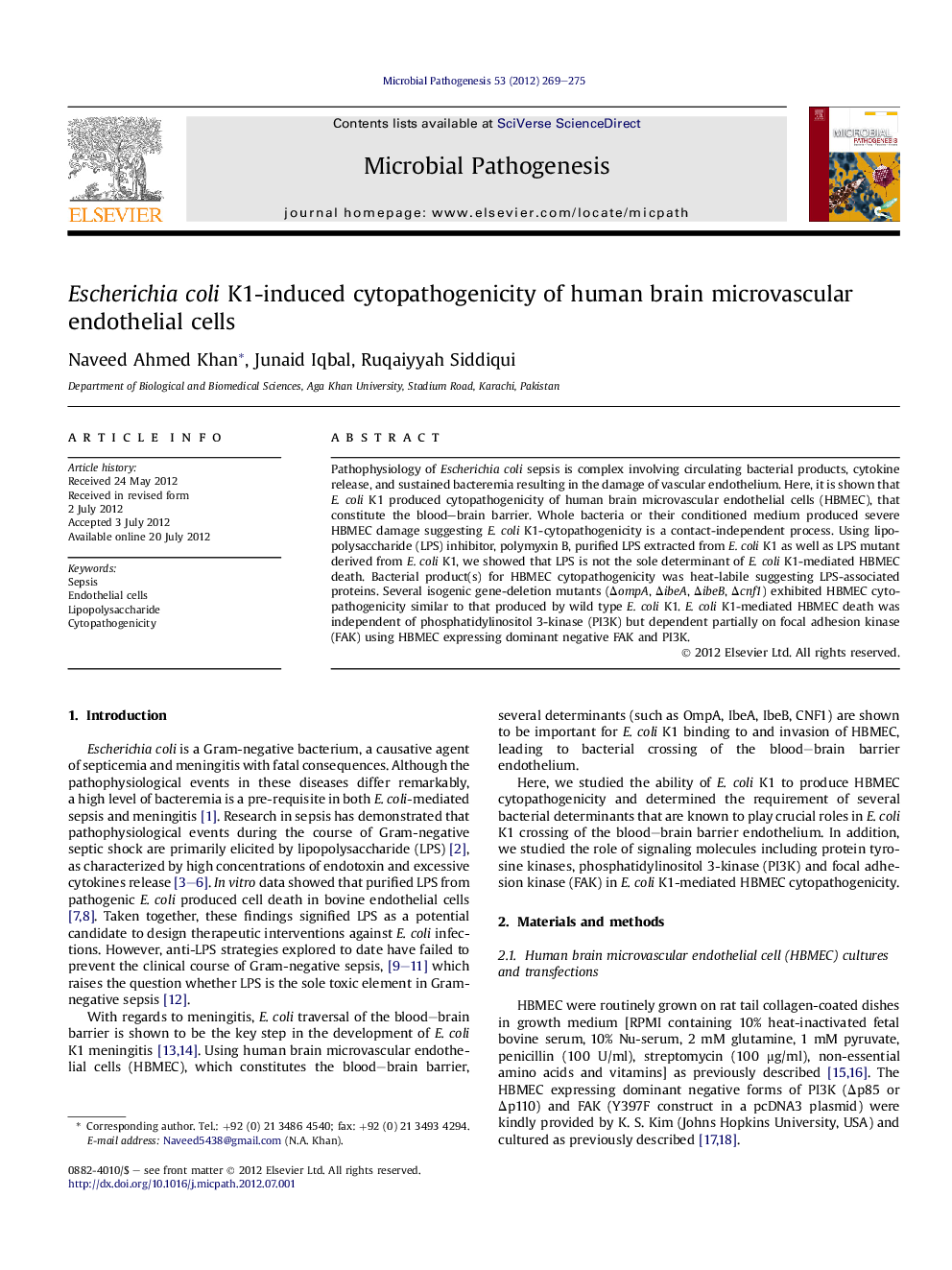| Article ID | Journal | Published Year | Pages | File Type |
|---|---|---|---|---|
| 6136350 | Microbial Pathogenesis | 2012 | 7 Pages |
Pathophysiology of Escherichia coli sepsis is complex involving circulating bacterial products, cytokine release, and sustained bacteremia resulting in the damage of vascular endothelium. Here, it is shown that E. coli K1 produced cytopathogenicity of human brain microvascular endothelial cells (HBMEC), that constitute the blood-brain barrier. Whole bacteria or their conditioned medium produced severe HBMEC damage suggesting E. coli K1-cytopathogenicity is a contact-independent process. Using lipopolysaccharide (LPS) inhibitor, polymyxin B, purified LPS extracted from E. coli K1 as well as LPS mutant derived from E. coli K1, we showed that LPS is not the sole determinant of E. coli K1-mediated HBMEC death. Bacterial product(s) for HBMEC cytopathogenicity was heat-labile suggesting LPS-associated proteins. Several isogenic gene-deletion mutants (ÎompA, ÎibeA, ÎibeB, Îcnf1) exhibited HBMEC cytopathogenicity similar to that produced by wild type E. coli K1. E. coli K1-mediated HBMEC death was independent of phosphatidylinositol 3-kinase (PI3K) but dependent partially on focal adhesion kinase (FAK) using HBMEC expressing dominant negative FAK and PI3K.
Graphical abstractLipopolysaccharide is not the sole determinant responsible for E. coli K1-mediated brain microvascular endothelial cell cytopathogenicity but requires LPS-associated and/or related bacterial proteins.Download full-size imageHighlights⺠Escherichia coli K1 produced brain endothelial cell death in a contact-independent manner. ⺠Lipopolysaccharide is not the sole determinant responsible for cell death. ⺠E. coli K1-mediated cell death requires LPS-associated bacterial proteins. ⺠This phenotype is independent of proteins such as OmpA, IbeA, IbeB and CNF1. ⺠Endothelial cell death is partially dependent on focal adhesion kinase activation.
